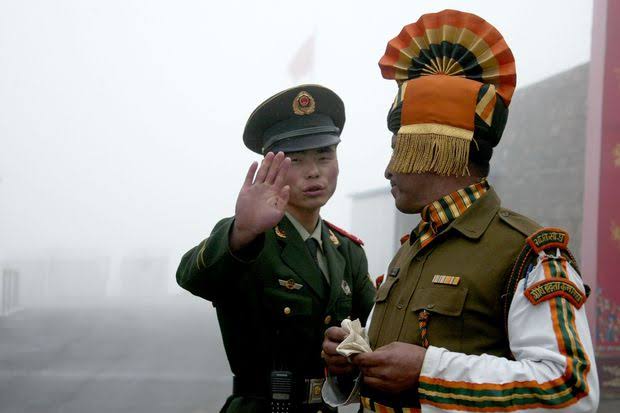Sino-india hostility:a brief overview on present standoff
The India-China border has been witnessing tensions over the past month, with incidents reported in at least four different locations along the Line of Actual Control (LAC).
These include: the Pangong lake in Ladakh, the Galway valley and Demchok.
Why do face-offs occur?
They mainly occur in areas along the LAC. The LAC has never been demarcated.
Differing perceptions are particularly acute in around two dozen spots across the Western (Ladakh), Middle (Himachal Pradesh and Uttarakhand), Sikkim, and Eastern (Arunachal Pradesh) sectors of the India-China border.
Face-offs occur when patrols encounter each other in the contested zones between overlapping claim lines.
Protocols agreed to in 2005 and 2013 detail rules of engagement to prevent such incidents, but have not always been adhered to.
Why has not the LAC been clarified?
India has long proposed an exercise to clarify differing perceptions of the LAC to prevent such incidents. Maps were exchanged in the Middle Sector, but the exercise fell through in the Western Sector where divergence is the greatest.
China has since rejected this exercise, viewing it as adding another complication to the on-going boundary negotiations.
India’s argument is rather than agree on one LAC, the exercise could help both sides understand the claims of the other, paving the way to regulate activities in contested areas until a final settlement of the boundary dispute.
What is the state of boundary negotiations?
The 22nd round of talks between the Special Representatives, National Security Adviser Ajit Doval and China’s State Councillor Wang Yi, was held in Delhi in December 2019. Both “agreed that an early settlement of the boundary question serves the fundamental interests of both countries” and “resolved to intensify their efforts to achieve a fair, reasonable and mutually acceptable solution”.
In 2005, an agreement on political parameters and guiding principles completed the first of three stages of the talks. The agreement said both sides “shall safeguard due interests of their settled populations in border areas”.
The current, and most difficult stage involves agreeing a framework to resolve the dispute in all sectors. The final step will involve delineating and demarcating the boundary in maps and on the ground.
What are the prospects of a settlement?
The likelihood appears remote. The main differences are in the Western and Eastern sectors.
India sees China as occupying 38,000 sq km in Aksai Chin. In the east, China claims as much as 90,000 sq km, extending all across Arunachal Pradesh.
A swap was hinted at by China in 1960 and in the early 1980s, which would have essentially formalised the status quo. Both sides have now ruled out the status quo as a settlement, agreeing to meaningful and mutual adjustments.
At the same time, the most realistic solution will involve only minor adjustments along the LAC, considering neither side will be willing to part with territory already held.
Presently, top army commanders conference on our side is going to held in new delhi, to discuss the future strategy regarding this raising tension
Let's see what happens in future. Will it stop or not



Comments
Post a Comment